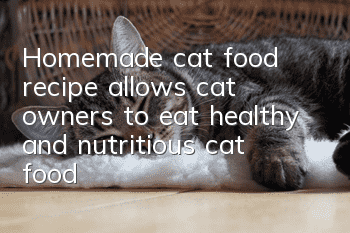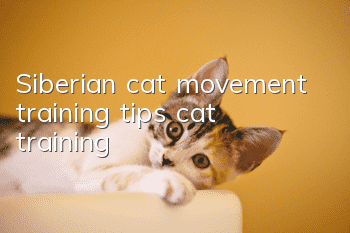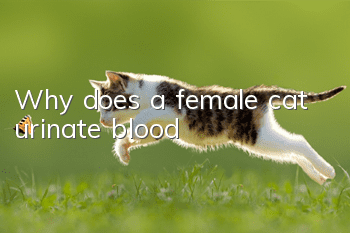Homemade cat food recipe allows cat owners to eat healthy and nutritious cat food

The animal protein of homemade cat food can be mixed with heart, eggs, meat, and white cheese. The ratio can be made according to the weight of your own cat; the green vegetable of homemade cat food can be mixed with ordinary vegetables, wheat grass or barley grass. The feeding amount is one spoonful; homemade cat food supplements can be mixed with vitamins, taurine and calcium powder, and the dosage can be based on the cat's weight.
Animal protein in homemade cat food
1. Internal organs
Cats can eat all animal hearts, kidneys and livers, among which cats like to eat liver the most. However, the function of the kidneys and liver of animals is to detoxify. Animals raised on farms today accumulate different toxins every day. Although the internal organs are rich in nutrients and contain iron, vitamin A, and vitamin D, vitamin D damage caused by excessive consumption must be avoided. A. Vitamin D poisoning.
How to eat: Boiled in boiled water
Frequency: 1~2 times a week
Feeding amount: about 1 scoop
2. Eggs
The yolk part of eggs has the highest nutritional content and is easy to digest, making it suitable for cats to eat. Wooden eggs should be purchased whenever possible.
How to eat: Boil in water or fry with a small amount of butter or vegetable oil.
Frequency: up to 2 times a day
Feeding amount: one egg or egg yolk per day
3. Meat
Choose chicken, beef or fish with the bones and skin removed. Don't feed too much pork as it contains more non-digestible fat than other meats.
How to eat: Steam, do not steam for too long, otherwise nutrients will be easily lost
Frequency: 1~3 times a day
Feeding amount: Add to cat food, up to 1 spoon per day
4. White cheese
Most white cheeses come in slices, are low in salt and contain no coloring. It also contains highly digestible protein, making it a favorite among cats!
How to eat: Eat directly
Frequency: up to three times a week
Feeding amount: about 1 spoon each time
Homemade cat food and green vegetables
The chlorophyll and fiber in vegetables can help cats excrete waste, toxins and eaten hair from the body, thus preventing constipation, hair balls and other problems. But it is not advisable to overdose, because too much plant food can cause urinary tract stones in cats.
1. Vegetables
Vegetables that cats can eat: cucumbers, leaves of most dark green vegetables, celery, etc. Do not feed tomatoes or other acidic or astringent vegetables to cats, as their gastrointestinal tract usually cannotGet used to these vegetables. Mushrooms are difficult to digest and are not suitable for cats to eat.
How to eat: Eat raw or cooked. Vegetables must be grated when eaten raw. If eaten cooked, they also need to be chopped, otherwise the cat will not be able to digest and absorb nutrients.
Frequency: Eat every day
Feeding amount: about 1 scoop
2. Wheat grass or barley grass
Wheat grass or barley grass can allow cats to eat as much as they like, because cats can control their food intake. If the cat does not take the initiative to eat it, you can cut off the wheatgrass growing on the top, wash it and chop it into pieces, or squeeze it into juice for feeding.
Frequency: Every day (taking juice as an example)
Feeding amount: up to 1 scoop per day
Homemade cat food formula allows cat owners to eat healthy and nutritious cat food
Homemade cat food supplements
1. Vitamins
(1) Multivitamins
Suitable for sick cats, kittens, pregnant women, lactating cats, and elderly cats. This ensures they receive complete nutrition. If your cat is eating high-quality cat food, there is no need to take a multivitamin every day, but only once a week.
(2) Vitamin E
It must be combined with other antioxidants (such as vitamin A and vitamin C). The combined vitamin E can enhance immunity, prevent cataracts, and keep skin healthy. Vitamin E is a good supplement for elderly cats. Although vitamin E has many benefits, because it is a fat-soluble vitamin, overdose will cause minor adverse reactions and hinder the absorption of other fat-soluble vitamins.
(3) Dimension C
Cats can make their own vitamin C, which can resist aging and help wounds heal quickly. It is very helpful for cats suffering from arthritis and gingivitis.
Do not choose vitamin C with added sugar or other fillers. Generally, 125~250mg per cat per day is enough. If gastrointestinal discomfort occurs, stop taking it immediately.
2. Taurine
Cats themselves consume a lot of taurine, and high-quality cat food has sufficient taurine added to it.
3. Calcium tablets and calcium powder
There are many types of calcium tablets and calcium powders for pets, such as calcium gluconate and modified calcium lactate, which are the most easily absorbed calcium supplements for cats.
Taboos in cat food
Chocolate, coffee, tea, onions, bones, MSG, smoked foods, grapes and grapes, uncooked meat and fish.
- Can premature kittens survive?
- How long does a British Shorthair cat sleep a day?
- What does it mean when a cat makes a cry-like sound at night?
- Why does a cat have repeated fevers?
- Can one-month-old kittens eat cat food?
- Stop picking out your pet’s ears with cotton swabs
- Should Cat’s Ear Hair Be Trimmed?
- How can pet cats prevent scabies, ticks, fleas, and lice?
- Why does a cat vomit bugs?
- Why is it better not to choose a black British Shorthair cat when raising a British Shorthair cat?



